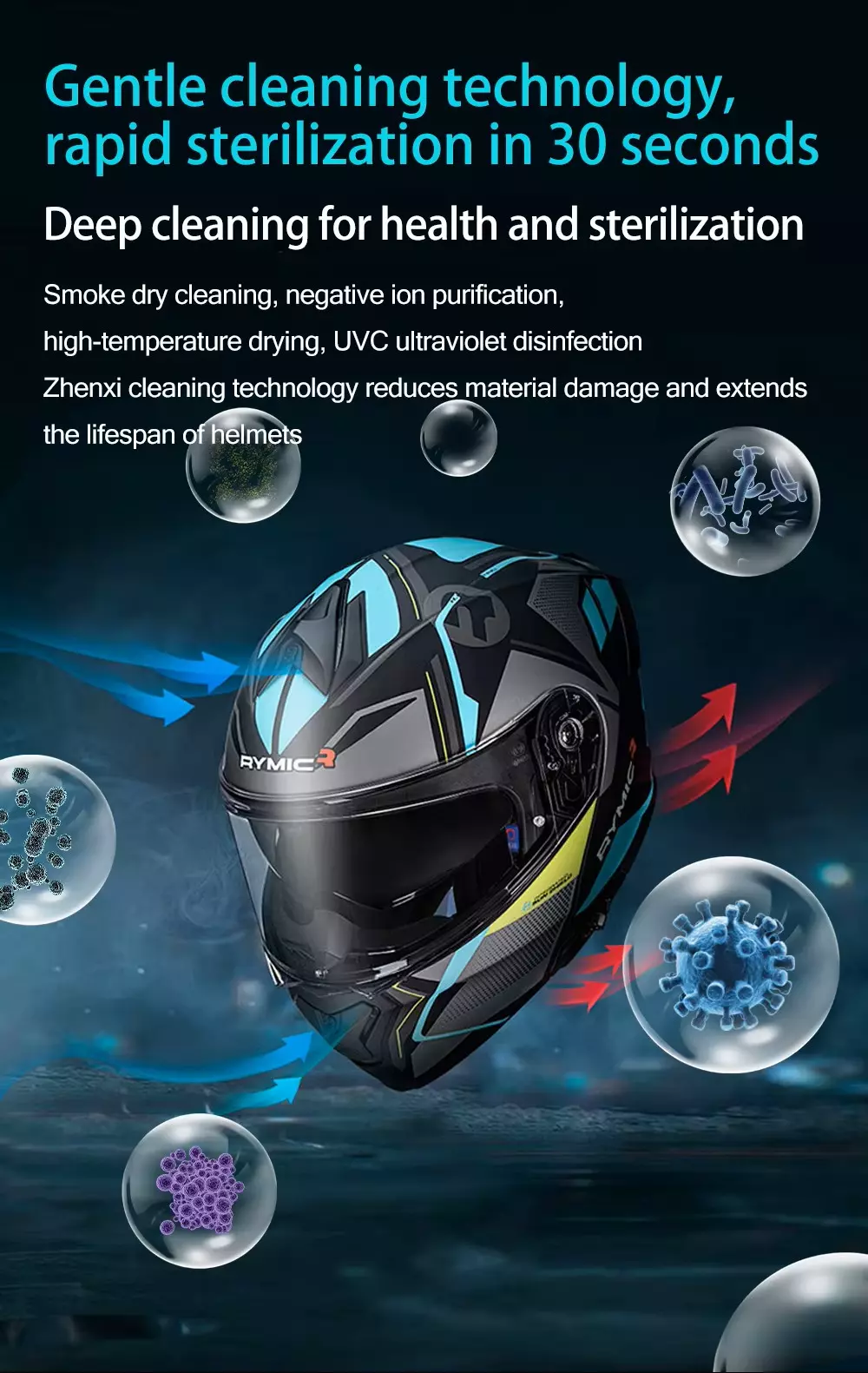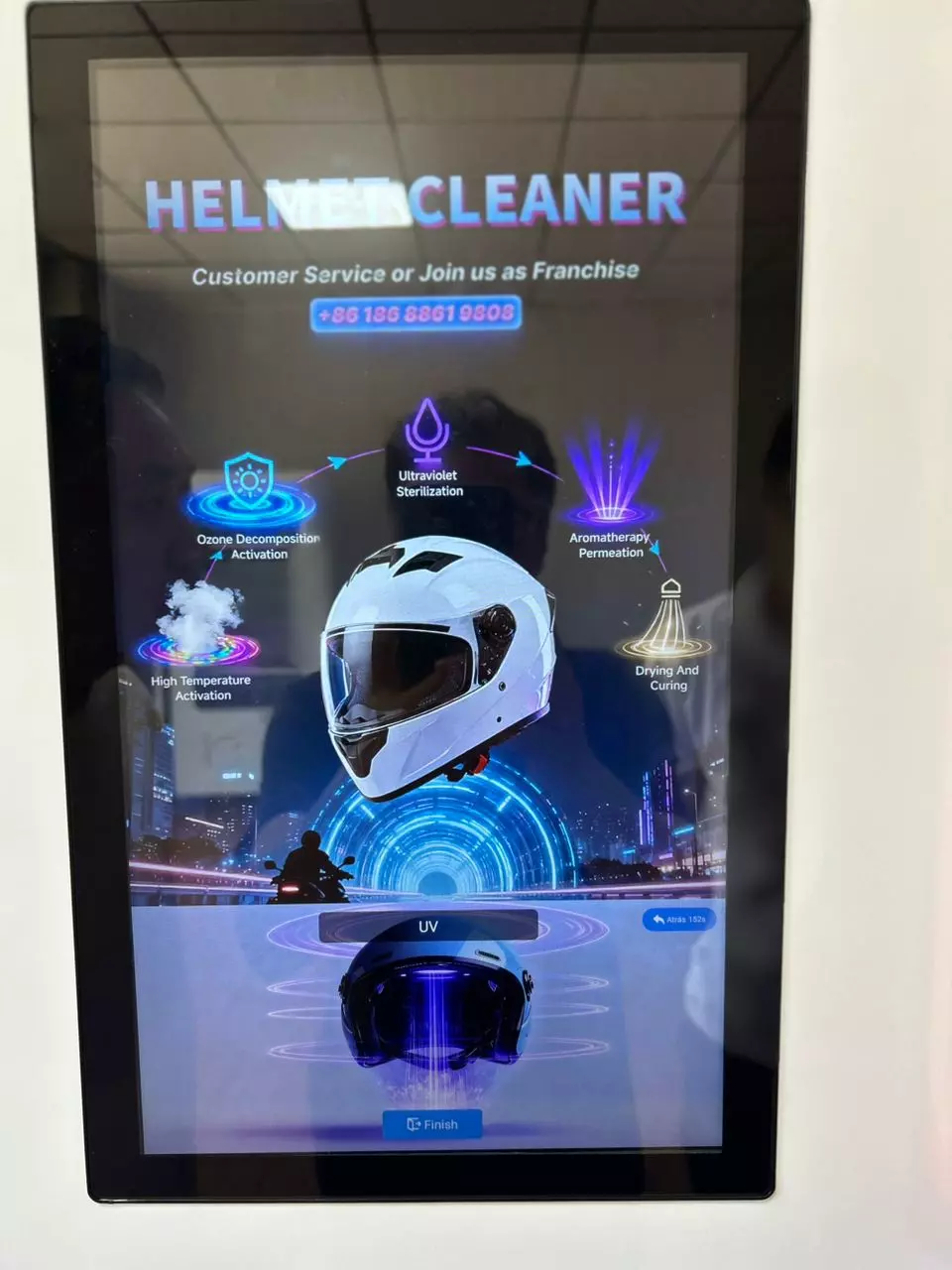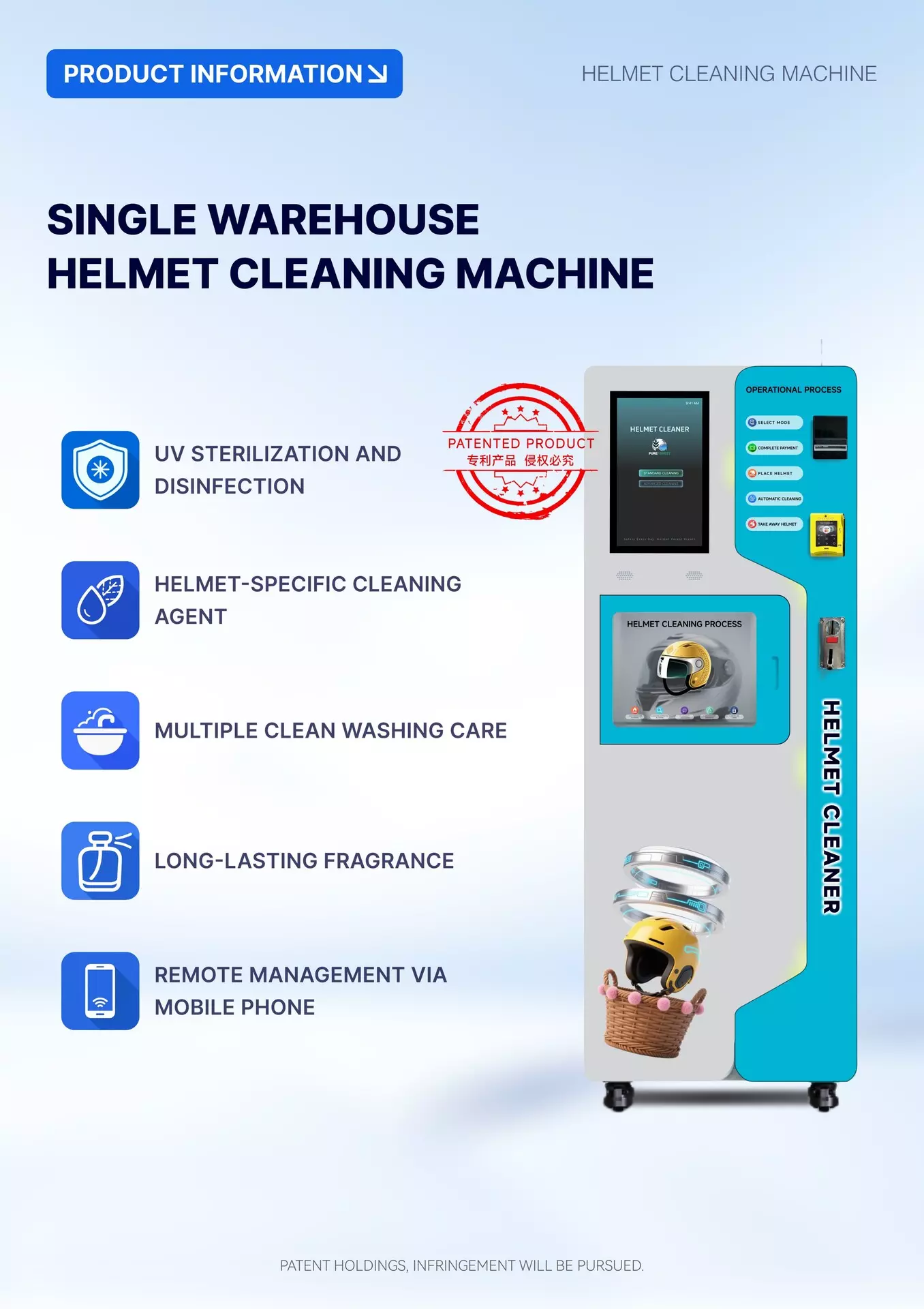Dry Cleaning vs. Wet Cleaning: Which Is Better for Helmets?
08 Nov, 2025
Introduction: Why Helmet Hygiene Matters
Around the world, millions of people rely on motorcycles and scooters every day. From Southeast Asia to Latin America, helmets are part of daily life. However, most riders rarely clean their helmets. Sweat, dust, humidity, and long-term use cause unpleasant odor and bacterial growth inside the helmet lining.
Traditional cleaning methods take time, require tools, or risk damaging the helmet. Many riders simply endure the discomfort.
This is where automatic helmet cleaning machines come in. They offer a fast, safe, and convenient way for riders to keep their helmets clean and fresh.
Dry Cleaning vs. Wet Cleaning: Two Very Different Approaches

Wet Cleaning (Water Washing)
Traditional helmet cleaning usually involves:
-
Removing the interior lining
-
Washing with soap and water
-
Air drying or blow drying
Problems:
-
The interior absorbs water and can take hours to dry
-
Frequent washing weakens material and affects shape
-
Coatings may peel or become damaged
-
Hard-to-reach seams still trap bacteria and dirt
Dry Cleaning (Automatic Helmet Cleaning Machine)
Dry cleaning uses:
-
Fine mist atomization cleaning agents
-
UV and ozone sterilization
-
Hot-air drying and fragrance retention
-
No disassembly required
Advantages:
-
Protects the helmet structure
-
No water absorption issues
-
Faster and more efficient
-
Designed for daily or frequent cleaning
| Feature | Dry Cleaning (Automatic Machine) | Wet Cleaning (Manual) |
| Cleaning Coverage | No dead angles; reaches inner seams | Mainly surface-level cleaning |
| Helmet Protection | No disassembly, no damage | Disassembly may deform pads and lining |
| Hygiene Level | Independent sterilization process | Shared tools may lead to contamination |
| Time Required | 7–12 minutes | 1 hour or more |
| Cost | Lower electricity and consumable cost | High labor and rental cost |
Why Wet Cleaning Is Not Ideal for Frequent Use
Wet cleaning works when a helmet is extremely dirty, but:
-
It takes too long
-
It is not suitable for everyday cleaning
-
Moisture increases bacterial regrowth if not fully dried
-
The helmet becomes uncomfortable to wear right after washing
For daily riders, quick dry-cleaning is more practical and healthier.
Core Technology Highlights of the Automatic Helmet Cleaner
-
Modular industrial design ensures long operating life and low maintenance
-
High-temperature evaporator eliminates traditional household humidifier failures
-
UV + Ozone triple sterilization kills bacteria and eliminates odor
-
Smart UI and cloud monitoring system support remote operation tracking and alerts

If you'd like to learn more, you can check out "How Helmet Cleaning Machines Work | The Smart Helmet Sanitizing Technology".
Flexible Payment Options for Public Use
The machine supports multiple payment systems based on local usage habits:
-
QR code payments (supports 70+ global mobile payment apps)
-
NFC, credit card, debit card payments
-
Paper money and coin acceptor options
This makes it easy to install in:
-
Gas stations
-
Motorcycle parking lots
-
Riding clubs
-
Colleges & campuses
-
Delivery hubs

How Helmet Dry Cleaning Is Changing the Rider Experience
Riders can now clean their helmet anytime, without depending on a shop or staff. Operators can install machines and generate recurring revenue from a simple self-service model.
Learn more about our Automatic Helmet Cleaning Machine → [View more - Automatic Helmet Cleaning Machine]

Future Trend & Market Potential
The rise of shared services and unattended vending systems makes the automatic helmet cleaner a natural fit for modern consumer behavior. Demand continues to grow in regions with high motorcycle use.
The combination of:
-
Cleanliness
-
Convenience
-
Low operating cost
-
Modern technology experience
is why automatic helmet dry-cleaning machines are quickly being adopted in multiple countries.
Conclusion
Wet cleaning is still useful in specific situations, but for everyday hygiene, convenience, and helmet protection, dry cleaning is clearly the better option. This is why automatic helmet cleaning machines are becoming the preferred solution for riders, service stations, and smart retail operators worldwide.
Previous: How Helmet Cleaning Machines Work | The Smart Helmet Sanitizing Technology
Next: No More
